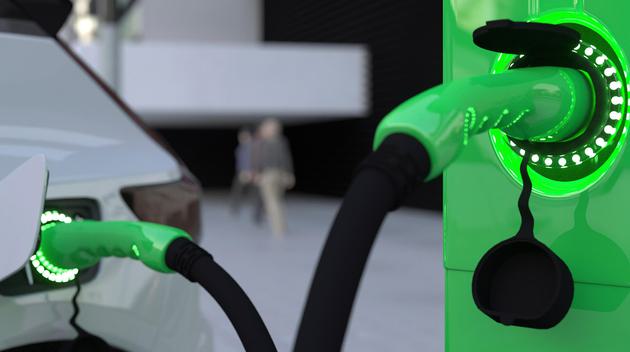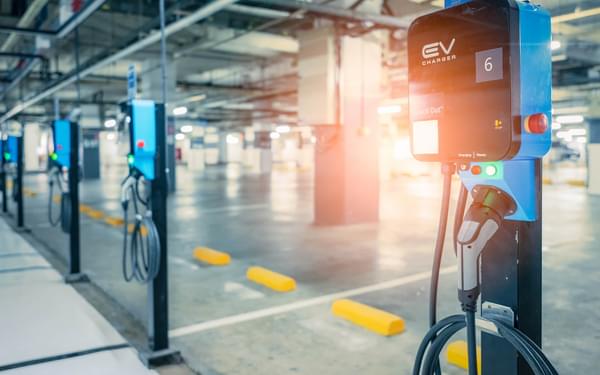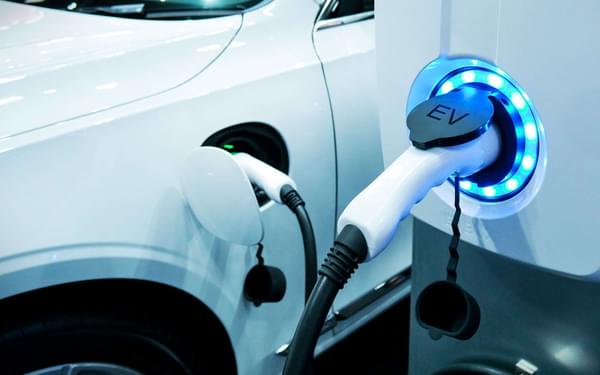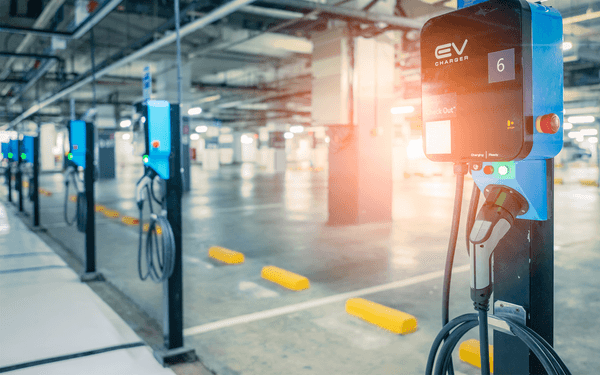Back to Articles
Hydrock roundtable: The complexities of EV charging
Sarah Langhorne \ 25th Oct 2022
We welcomed a select group of guests to our recent roundtable in London, ‘The complexities of EV charging.’ They represented a range of stakeholder groups all with an interest in the successful roll out of EV charging infrastructure.
Setting the scene for the roundtable: There are now more than one million plug-in vehicles in the UK, and a quarter of those were sold just this year (2022). Despite supply-side issues, one in five new cars is now electric.
We know from our demand forecasting that EV uptake is highly dependent on availability, pricing, and crucially, charging infrastructure. Given the volume of homeowners without private driveways from which to charge their cars, public charging is a key - yet there is a staggering variation in access to charge points nationally.
This landscape poses a range of questions:
- How can technology providers best qualify their own business opportunities?
- How do we use data to support investment due diligence?
- What can the public sector do to maximise equitable delivery?
- How can planners best integrate future-proofed charging in new communities?
- What is the emerging role of mobility hubs in the EV transition?
- What EV-specific considerations should architects factor into their projects?
- What influence can residential developers have on charging delivery beyond building regulations?
- And finally, how can construction professionals maximise value and utilisation through data-driven EV insights?
The charging market is young. All manner of entities are stepping into the breach to try and solve the issue of chronic under-provision of charging infrastructure. Public bodies are trying to deliver equitable solutions for residents, most of whom don’t have private driveways and so rely on public charging; investors need ways to qualify funding for the right projects; and technology providers are trialling a variety of delivery models with varying degrees of owned risk. No one feels comfortable saying it, but the trial-and-error approach applied so far has left a swathe of underutilised or defunct infrastructure out there.
The common themes emerging from our roundtable debate included:
One: Unreliable access to charging infrastructure
With ‘half of London’s residents’ having no driveway, would-be EV drivers don’t have the domestic space to park and charge their cars, and there’s no assurance that public charge points will be available roadside when they’re needed. This does, however, support the argument for workplace charging.
Countering this, it was argued that domestic charging is simply a backup, and that there are enough public charge points – the problem lies in dwell time being longer than it needs to be. Essentially, anticipated user behaviour isn’t matching actual user behaviour. This is especially true in London, where people aren’t using their cars as much as expected – instead, weekday reliance on alternative transport such as bus and tube means users might park in a charging bay for an extended period – in some cases, a week or more. The charge point operator revenue model fails in these cases.
In locations where this is part of the issue, should the adoption model change and instead, rely on superfast chargers? Prohibitively long dwell times could be avoided by provision of chargers that do not allow lengthy parking stints. For example, if we adopted the forecourt model for superfast chargers, we make the technology work for us, rather than asking for people to change habits. The problem is, until we have the technology to enable this - solid-state batteries, for example - even the super-fast chargers require longer time at ‘the pumps’ than we’re used to.
Two: Urban versus out of town
The Mayor of London has stipulated that by 2030, 80% of travel should be by active or public transport means. Even if this is achieved, London will still need EV charge points for buses, taxis, delivery vehicles and some cars. People are still reliant on car parks at transport hubs to allow for their multi-modal travel.
In other areas, public transport isn’t as convenient, it may feel unsafe, and it may end up more expensive if travelling as a family group, for example.
We can also consider the Victorian notion of a coach house: a journey-stop off that acted as a social hub with quality dwell time. Some charge point operators are adopting this and developing charging hubs that cater for shopping, eating and leisure.
Is the answer to focus on the most sustainable travel options within communities (of any size); and accept that travel between communities might be different?
Three: Cost
Affordability remains a barrier. The price of EVs is coming down, but at the time of our discussion, EVs are considered expensive. This means most adopt EVs for environmental reasons.
Four: Ignorance
Lack of knowledge prevents drivers from making the switch to electric. Over 85% of the population feel they don’t know enough about EVs, and so feel unequipped to make EV-related decisions – knowledge such as there being no road tax on EVs and no duty on charging like there is with petrol or diesel.
Five: Access to power and grid constraints
For any development, but in particular, large schemes such as residential developments, access to power and site capacity is the big issue. Balancing what the needs of the site are with what the grid has to offer, is the day-to-day challenge. In some parts of west London, there is an eight year wait on accessing the power required for some developments. Power procurement is a burgeoning problem requiring increasingly innovative solutions.
Six: Land use and maximising assets
Most local authorities are planning for fewer car parks, but actually, they need to plan for more. Accommodating EVs requires increased public access to charge points.
Car ownership might be decreasing but there’s just as many vehicles as there have been previously, via ride sharing, Ubers, car clubs, etc. These new means of vehicle usage are replacing private ownership but not affecting numbers of vehicles on the road.
Seven: Pace of change
Moore’s Law posits that technology will become significantly faster, smaller, and more efficient over time. Our roundtable agreed the application of this to the EV market has big impacts, including funding inertia. How do investors act on something with such a steep innovation curve?
If we take a forward look, even 50kw chargers will quickly become obsolete. How can land and asset owners plan to utilise land beyond this?
Future-gazing further, will induction loops change everything again? The prospect of ‘wireless charging’ at junctions mean cars are drip-fed charge on the go, negating the need for forecourts or EV car parks.
Similarly, battery technology is developing at pace. Solid state batteries will mean charging takes 10 minutes, not 40. And as for Hydrogen… that’s a subject for another roundtable, another day.
Many thanks to our contributors for joining us.














